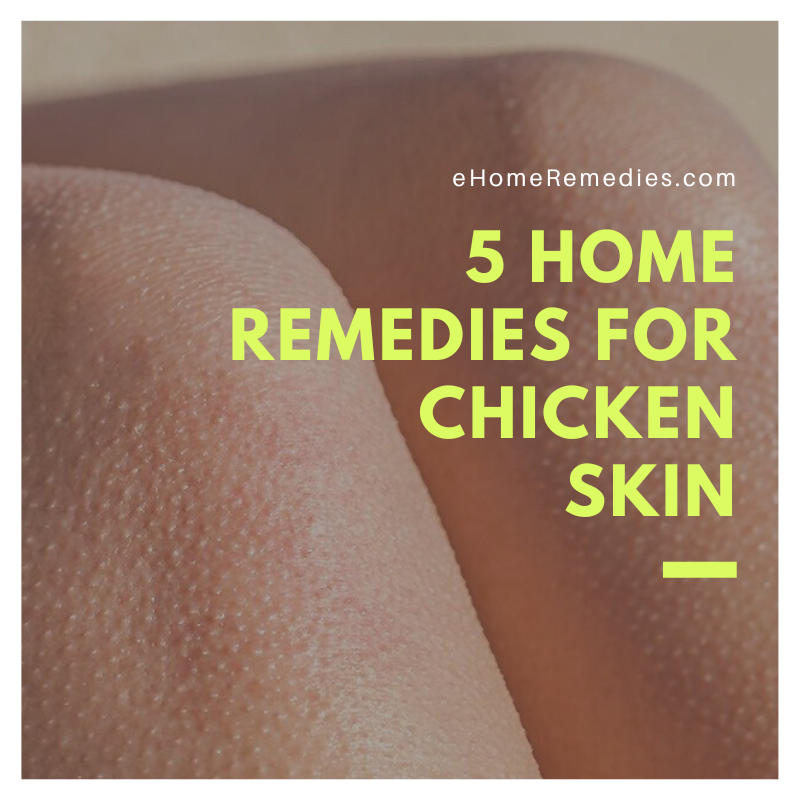If you’ve ever wondered what causes chicken skin, the simple answer is that it’s caused by a buildup of keratin in the pores. This protein is a component of body hair, and when it gets trapped, it prevents the opening of hair follicles. As a result, a small bump forms over the hairless area. Fortunately, there are natural home remedies for chicken skin that can help you get rid of the itch and prevent the formation of chicken skin.

1. Apple cider vinegar
There are many benefits of using apple cider vinegar on your chicken skin. The acidic properties of apple cider vinegar will help balance your chicken’s pH level, which is important for their health. It will also kill worms and other germs. The acidic quality of the vinegar will also raise the barriers in your chicken’s body. This means that it will keep worms from entering. Adding one or two tablespoons per chicken’s body daily will help prevent infection and keep your flock safe.

If you’re looking for a natural cure for ringworm, you should buy unpasteurized apple cider vinegar. This type contains a “mother”, which develops during the fermentation process. It contains probiotics, as well as minerals and vitamins. One of the most well-known brands of organic apple cider vinegar is Braggs. Look for vinegar that has both mother and “mother culture”. It’s better to get unpasteurized versions than pasteurized ones.
Another great use for apple cider vinegar is as a natural sunburn remedy. Just pour some of it into warm water and apply it with a cotton ball. You can repeat this process several times daily to keep your skin supple and healthy. You can also use this to boost your immune system. The mixture will soothe your skin and keep it hydrated. When applied to the skin, the vinegar will also soothe irritation and make it soft.
2. Coconut oil

Chicken skin, also known as keratosis pilaris, is a common genetic skin condition. The bumps are made of dead skin cells, which clog the hair follicles. The condition usually affects children and can cause red, itchy skin. Coconut oil has lauric acid, which can help with the symptoms. Applying coconut oil to the affected area may also help prevent further outbreaks.
Using coconut oil as a natural home remedy for chicken skin can help smooth out the bumps. This condition is caused by a buildup of keratin on the skin’s surface. The best way to avoid further irritation is to keep it moisturized at all times. Applying coconut oil to the affected area once a day or once a week can help eliminate the bumps.
If you don’t have access to virgin coconut oil, you can also use brown sugar mixed with coconut oil. Mix equal parts of sugar and coconut oil in a mason jar and store it in an air-tight container. You can use this scrub two or three times a week, depending on your skin type. Gently massage the mixture into the affected area using circular motions. After applying the scrub, rinse the affected area with apple cider vinegar and pat dry.
Although coconut oil is an excellent natural remedy for eczema, it should be used with caution. Coconut oil contains chemical residues from processing and may cause sensitivity. Additionally, coconut oil that is sold in liquid form should not be used for eczema because it lacks lauric acid, a natural antibacterial. A small amount of coconut oil on the affected area may be enough to reduce the itchiness and inflammation.
3. Witch hazel

You’ve probably heard of witch hazel for its medicinal properties, but did you know it also has an anti-itching effect? You can use witch hazel to treat chicken skin and diaper rash. This alcohol-based topical ointment can be applied to itchy areas with a cotton ball. Allow it to dry and repeat as necessary. If you find the problem persists, you can always apply more witch hazel to the area.
You can also mix witch hazel with water to treat a variety of skin conditions, including acne and chicken skin. Witch hazel is also an effective anti-itching treatment for chicken skin and helps soothe itching caused by chickenpox. Apply the mixture to the affected area as needed. The solution can also be combined with rose water to create an acne-banishing toner. Using this treatment can help relieve many skin problems and leave your skin feeling fresh and smooth.
According to Dr. Jaliman, you should always make sure that you use alcohol-free witch hazel so that the substance does not irritate your skin. This way, it will also seal in moisture and keep out harmful microbes. If you do find that witch hazel is irritating your skin, you can use a simple moisturizer to restore moisture. Ideally, you should use a lotion or cream without fragrance.
In addition to treating dry skin, witch hazel also reduces the sensitivity of the scalp. Applying this to the scalp will reduce the symptoms of psoriasis and dandruff. You can use witch hazel to shampoo your hair as well. If you are using witch hazel as a toner for your hair, you may want to try adding it to your shampoo for a better result.
4. Baking soda

You can treat your chicken skin using baking soda. The soda breaks down harmful proteins and acids and helps normalize the skin’s pH level. Sebum is a mixture of fatty acids and proteins and sweat contains lactic acid and amino acids. The ideal pH level for the skin is slightly acidic. Baking soda can also relieve the pain and inflammation caused by sunburn and keep the moisture in your skin.
For relief from chickenpox, take a baking soda oatmeal bath. It is an effective way to treat the symptoms of chickenpox. This treatment also has anti-inflammatory properties and helps relieve the symptoms of hemorrhoids and ichthyosis. As it changes the pH level, the baking soda gently exfoliates the skin. It also helps reduce the appearance of scars and inflammation.
Another way to treat chicken skin is to apply a paste of baking soda to it. This paste can be applied to the affected area and is very cheap and effective. Alternatively, you can also mix baking soda with lemon to add citric acid to your skin. Apply this paste to the affected area twice a day for best results. The best part is that baking soda is widely available and inexpensive, so you can replace your expensive creams, lotions, and other skincare products with it.
5. Exfoliation

You may have chicken skin, or keratosis pilaris if your dead skin cells clog up your hair follicles. Using a gentle exfoliation process can reduce the bumps on your skin and lessen the appearance of red bumps and itchiness. Gentle chemical exfoliation methods are preferred over harsh, chemical treatments, such as glycolic acid and salicylic acid. If you choose a chemical treatment, be sure to protect your skin from the sun and apply moisturizer to reduce the itchiness.
Dry air is the worst enemy for skin with keratosis pilaris. The cold air can irritate it even more. Use a humidifier to help combat the dryness. The most effective treatment for keratosis pilaris is to eliminate the buildup of dead skin, which clogs the hair follicles. It’s not a cure, but it’s one of the best ways to reduce irritation and inflammation.
There are many home remedies for keratosis pilaris, including exfoliation. If you’re looking for a way to get rid of your chicken skin, a scrub is your best bet. This method is gentle and effective, yet still safe for the skin. You can also try a scrub that contains aloe vera to help eliminate the keratin. And don’t worry – if you’re serious about eliminating your chicken skin, you can consult your doctor.
Conclusion
While chicken skin is not a life-threatening condition, it can be unsightly and embarrassing. Several home remedies can help improve the appearance of chicken skin lesions. If you are unhappy with your current treatment plan or if the lesions are causing you discomfort, please consult your doctor for additional treatment options.


